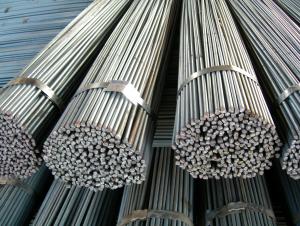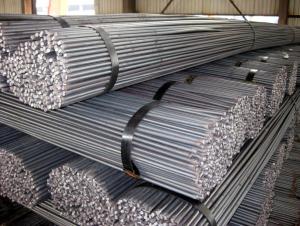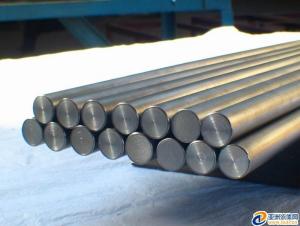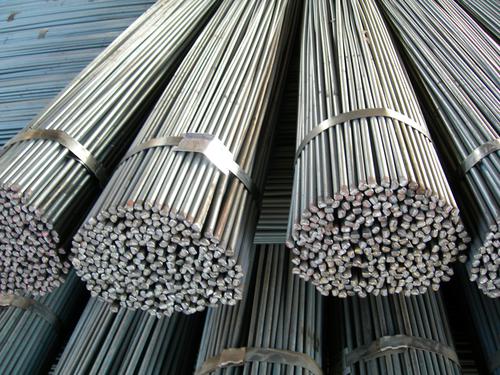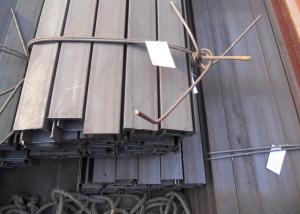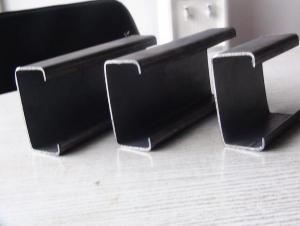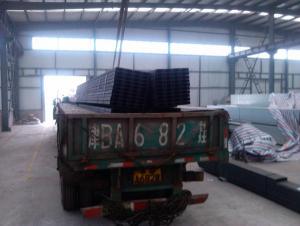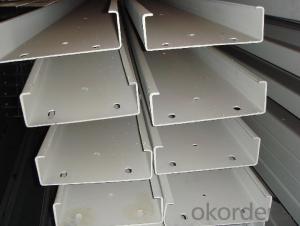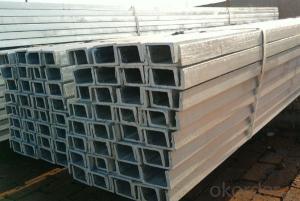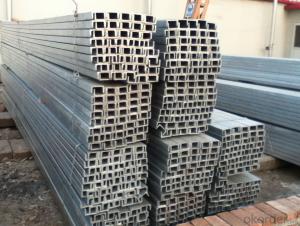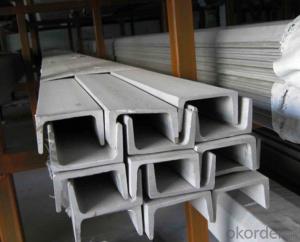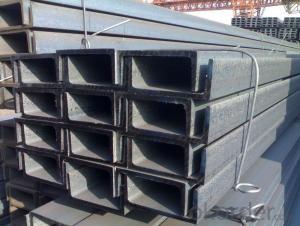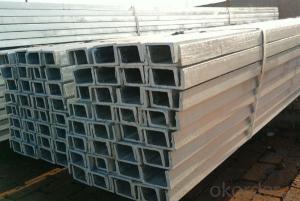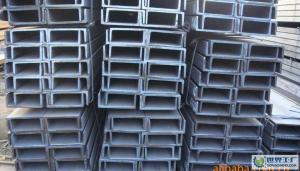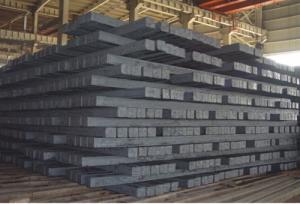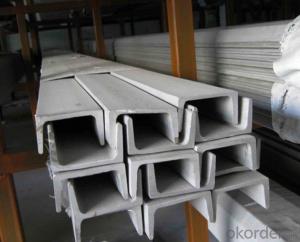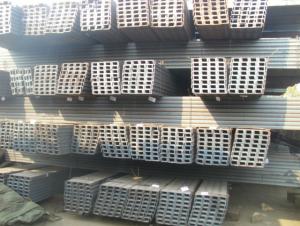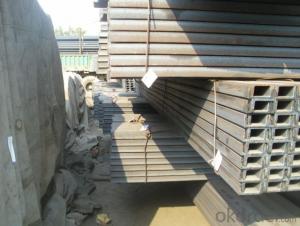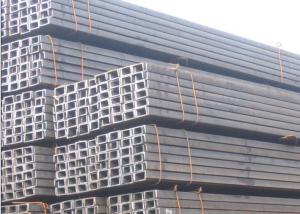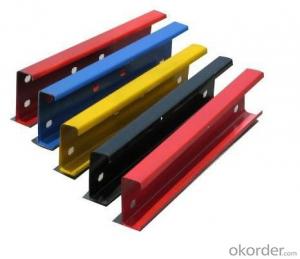GB U CHANNEL 10025 S235JR or JIS U Channel Hot Rolled High Quality
- Loading Port:
- China Main Port
- Payment Terms:
- TT or LC
- Min Order Qty:
- -
- Supply Capability:
- -
OKorder Service Pledge
OKorder Financial Service
You Might Also Like
Product Description:
OKorder is offering high quality GB U CHANNEL 10025 S235JR or JIS U Channel Hot Rolled High Qualityat great prices with worldwide shipping. Our supplier is a world-class manufacturer of steel, with our products utilized the world over. OKorder annually supplies products to European, North American and Asian markets. We provide quotations within 24 hours of receiving an inquiry and guarantee competitive prices.
Product Applications:
1.The JIS U Channel Steel can be devided into two kinds, namely common channel steel and light channel steel. The sizes of hot rolled common channel steel range from 5# to 40#. Meanwhile, the channel steel can be divided into cold forming sectional equal channel steel, cold forming sectional unequal channel steel, cold forming inner edge channel steel and outer edge channel steel.
2.The JIS u channel steel is usually used for arch-itechtural structure, and they could be welded in order to support or hang a vari-ety of facilities. They are also usually used in combination with I beam. The channel steel with sizes under 14# is usually applied to construction engineering, as purline, while the channel steel with sizes above 16# is more likely to be used in building vehicle chassis structure and mechanical structure. Furthermore, the channel steel in sizes above 30# are target at building bridge structure, as tension bar.
3.In a word, the channel steel must possess perfect welding property, riveting property and mechanical property and so on.
Product Advantages:
OKorder's GB U CHANNEL 10025 S235JR or JIS U Channel Hot Rolled High Qualityare durable, strong, and resist corrosion.
Main Product Features:
· Premium quality
· Prompt delivery & seaworthy packing (30 days after receiving deposit)
· Corrosion resistance
· Can be recycled and reused
· Mill test certification
· Professional Service
· Competitive pricing
Product Specifications:
Manufacture: Hot rolled
Grade: Q195 – 235
Certificates: ISO, SGS, BV, CIQ
Length: 6m – 12m, as per customer request
Packaging: Export packing, nude packing, bundled
Original Place | Tangshan, China | Brand Name | UINDA |
Standard | JIS G3192 : 1990 | ||
Material Grade | SS490 | ||
Sizes | 50mm to 200mm | ||
Sales Volume/Year | 3000MT | ||
Destination Area | Middle East, Africa, Southeast Asia | ||
2. The sections in details are as followings in the table-1
JIS U CHANNEL | Standard | Sectional | Dimension |
| Mass: |
| (mm) | (mm) | (mm) | (mm) |
|
50x25 | 50 | 25 | 3.0 | 6.00 | 2.37 |
75X40 | 75 | 40 | 3.8 | 7.00 | 5.30 |
75X40 | 75 | 40 | 4.0 | 7.00 | 5.60 |
75X40 | 75 | 40 | 4.5 | 7.00 | 5.85 |
75X40 | 75 | 40 | 5.0 | 7.00 | 6.92 |
|
|
|
|
|
|
100X50 | 100 | 50 | 3.8 | 6.00 | 7.30 |
100X50 | 100 | 50 | 4.2 | 6.00 | 8.03 |
100X50 | 100 | 50 | 4.5 | 7.50 | 8.97 |
100X50 | 100 | 50 | 5.0 | 7.50 | 9.36 |
|
|
|
|
|
|
125X65 | 125 | 65 | 5.2 | 6.80 | 11.66 |
125X65 | 125 | 65 | 5.3 | 6.80 | 12.17 |
125X65 | 125 | 65 | 5.5 | 8.00 | 12.91 |
125X65 | 125 | 65 | 6.0 | 8.00 | 13.40 |
|
|
|
|
|
|
150x75 | 150 | 75 | 5.5 | 7.30 | 14.66 |
150x75 | 150 | 75 | 5.7 | 10.00 | 16.71 |
150x75 | 150 | 75 | 6.0 | 10.00 | 17.90 |
150x75 | 150 | 75 | 6.5 | 10.00 | 18.60 |
150x75 | 150 | 75 | 6.5 | 10.00 | 24.00 |
|
|
|
|
|
|
200X80 | 200 | 80 | 7.5 | 11.00 | 24.60 |
3. The mechanical property of JIS U Channel Steel in the table-2:
Grade | Yield Strength,N/mm² | Extension Strength N/mm² | |||
Thickness of Steel,mm | |||||
≦16 | >16-≦40 | >40-≦100 | >100 | ||
SS490 | ≧285 | ≧275 | ≧255 | ≧245 | 490-610 |
4. The chemical composition of JIS U Channel Steel as per SS490 in the table-3
Grade | Element(%) | |||
C | Mn | P | S | |
SS490 | - | - | ≦0.050 | ≦0.050 |
FAQ:
Q1 What makes stainless steel stainless?
A1 Stainless steel must contain at least 10.5 % chromium. It is this element that reacts with the oxygen in the air to form a complex chrome-oxide surface layer that is invisible but strong enough to prevent further oxygen from "staining" (rusting) the surface. Higher levels of chromium and the addition of other alloying elements such as nickel and molybdenum enhance this surface layer and improve the corrosion resistance of the stainless material.
Q2 Can stainless steel rust?
A2 Stainless does not "rust" as you think of regular steel rusting with a red oxide on the surface that flakes off. If you see red rust it is probably due to some iron particles that have contaminated the surface of the stainless steel and it is these iron particles that are rusting. Look at the source of the rusting and see if you can remove it from the surface.
Q3: The products are invoicing on theoritical weight or on actual weight?
A3: We can do it in both manners, according to the customers' request.

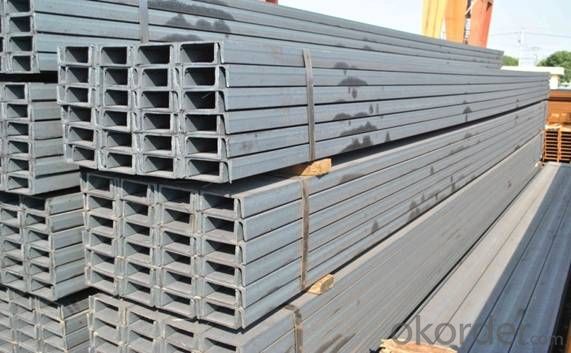
- Q: Is the bottom of the channel not real? Why do we open the hole? What's the reason?
- Is the most ideal processing equipment of stainless steel and flat iron, steel, steel, iron pipes and other processing households, profile processing businesses.
- Q: 10# how much is it per kilogram of channel steel?
- Cold rolling edge channel (CJ/YB99-81 standard standard)The height of =120, legs wide =60, short width =20, thickness =3, leg end arc radius =3.0, cross-sectional area (cm2) =7.808, (kg/m) =6.090 theoretical weight (legs bent inward kind)If the non target is not necessarily.
- Q: Can steel channels be used for fencing purposes?
- Yes, steel channels can be used for fencing purposes. Steel channels are versatile and strong, making them an excellent choice for fencing applications. They can be used to create a sturdy and durable fence structure that can withstand various weather conditions and provide security. Steel channels can be easily customized to fit different fencing designs and sizes, and they can be combined with other materials like wire mesh or panels to create a more secure and visually appealing fence. Additionally, steel channels are resistant to corrosion, which makes them a long-lasting option for fencing projects.
- Q: Can steel channels be used for supporting solar panels?
- Indeed, steel channels have the capability to support solar panels. These channels are frequently employed in construction due to their robustness and resilience, rendering them well-suited for bearing the weight of solar panels. They furnish a sturdy and dependable framework for securing the panels in position, guaranteeing their correct installation and operation. Steel channels can be effortlessly tailored and modified to accommodate the precise demands of the solar panel installation, thus rendering them a flexible option for supporting solar panels. Moreover, steel channels provide protection against adverse weather conditions, ensuring the enduring stability and security of the solar panel system.
- Q: What is the weight of a steel channel?
- The weight of a steel channel depends on various factors such as its dimensions and thickness. Steel channels are typically measured in terms of their weight per foot or weight per meter. To determine the weight of a steel channel, you would need to know its dimensions, including the height, width, and thickness. By using the appropriate formula or consulting a steel weight chart, you can calculate the weight of a steel channel.
- Q: Six meters long, standard 10 channel steel, theoretical weight
- The finished channel steel is delivered by hot forming, normalizing or hot rolling. The specifications are expressed in millimeters of height (H) * leg width (b) * waist thickness (d), such as 100*48*5.3, which means waist height is 100 mm, leg width is 48 mm, waist thickness is 5.3 mm channel, or 10# channel steel. The same height of the channel, if there are several different leg width and waist thickness, also need to add a, B, C on the right side of the model to distinguish, such as 25#a, 25#b, 25#c and so on.
- Q: How to choose angle steel and channel steel for dry hanging stone?
- The specifications of the metal frame used for hanging stone are mainly the thickness of the stone and the strength of the wall!
- Q: Can steel channels be used for both vertical and horizontal applications?
- Yes, steel channels can be used for both vertical and horizontal applications. Steel channels are versatile structural elements that can provide support and reinforcement in various directions, making them suitable for both vertical load-bearing and horizontal bracing purposes.
- Q: What are the different types of connections used for steel channels in steel bridges?
- There are several types of connections used for steel channels in steel bridges, including bolted connections, welded connections, and hybrid connections. Bolted connections involve using bolts to join the steel channels together, providing flexibility and ease of installation. Welded connections involve fusing the steel channels together using welding techniques, providing a strong and permanent connection. Hybrid connections combine both bolted and welded connections, utilizing the advantages of both methods for optimal performance and ease of construction. The choice of connection type depends on factors such as design requirements, load capacity, and construction constraints.
- Q: Are steel channels suitable for use in the construction of conveyor systems?
- Yes, steel channels are suitable for use in the construction of conveyor systems. Steel channels offer a number of beneficial properties that make them ideal for this purpose. Firstly, steel channels provide excellent strength and durability, allowing them to withstand the heavy loads and constant movement typically associated with conveyor systems. They also have high resistance to corrosion and wear, ensuring a longer lifespan and reducing the need for frequent maintenance or replacement. Additionally, steel channels can be easily customized and fabricated to meet specific design requirements, allowing for a more efficient and effective conveyor system. Overall, the use of steel channels in conveyor system construction can enhance the system's functionality, reliability, and longevity.
Send your message to us
GB U CHANNEL 10025 S235JR or JIS U Channel Hot Rolled High Quality
- Loading Port:
- China Main Port
- Payment Terms:
- TT or LC
- Min Order Qty:
- -
- Supply Capability:
- -
OKorder Service Pledge
OKorder Financial Service
Similar products
Hot products
Hot Searches
Related keywords
